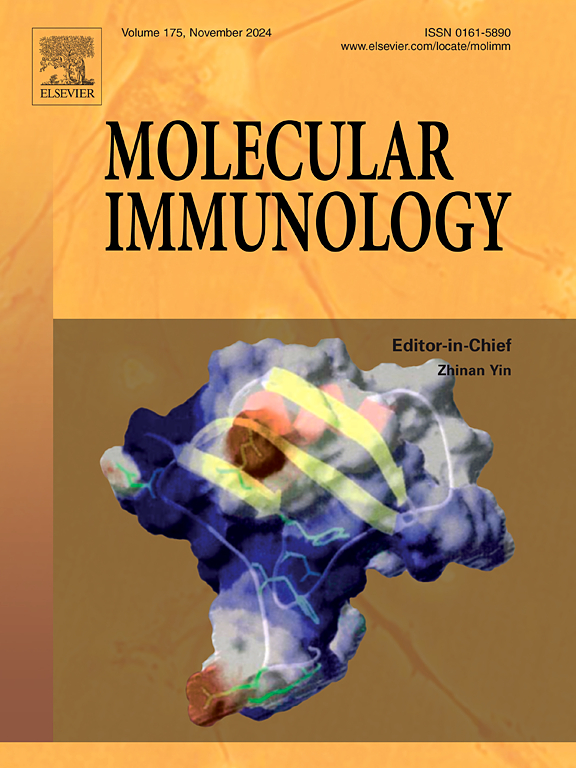TSPAN15 enhances EMT-mediated metastasis of HCC by promoting autophagy through BTRC-mediated PDCD4 degradation
IF 3
3区 医学
Q2 BIOCHEMISTRY & MOLECULAR BIOLOGY
引用次数: 0
Abstract
Background
Cumulative evidence shows that Tetraspanin 15 (TSPAN15) shows a high degree of consistency in a variety of tumor characteristics, which has attracted extensive attention from researchers. We used TSPAN15 as a starting point to explore the role and mechanism of TSPAN15 in in hepatocellular carcinoma (HCC).
Methods
Using database analysis, recombinant plasmid transfection technology, transwell, autophagic flux analysis and western blotting, the effects of TSPAN15 on autophagy, invasion, epithelial-mesenchymal transition (EMT) of HCC cells, and tumor growth and metastasis were elucidated after silencing TSPAN15 in HCC cells. The effect of TSPAN15 on tumor growth was detected by using xenograft model of nude mice.
Results
Based on the online database and immunohistochemistry analysis, it was found that the mRNA and protein expression of TSPAN15 in HCC tissues was significantly higher than that in normal liver tissues or adjacent non-cancerous tissues. High expression of TSPAN15 was an independent risk factor for poor prognosis in TCGA-LIHC patients. TSPAN15 silencing inhibited HCC autophagy and autophagy-induced migration, invasion and EMT as well as tumor growth and metastasis. Mechanistically, TSPAN15 contributed to programmed cell death 4 (PDCD4) proteasomal degradation through physical interaction with beta-transducin repeat containing (BTRC), thus activing autophagy. Rescue experiments revealed that PDCD4 effectively inhibited TSPAN15-induced autophagy, migration, invasion and EMT.
Conclusion
Abnormally expressed TSPAN15 promotes the degradation of tumor suppressor gene PDCD4 through ubiquitination, thereby promoting autophagy and autophagy-mediated EMT and metastasis of HCC cells, demonstrating the importance of TSPAN15 in the molecular etiology of HCC and its potential therapeutic value.
TSPAN15通过btrc介导的PDCD4降解促进自噬,从而增强emt介导的HCC转移
越来越多的证据表明,Tetraspanin 15 (TSPAN15)在多种肿瘤特征中表现出高度的一致性,引起了研究者的广泛关注。我们以TSPAN15为切入点,探讨TSPAN15在肝细胞癌(HCC)中的作用和机制。方法采用数据库分析、重组质粒转染技术、transwell、自噬通量分析和western blotting等方法,探讨TSPAN15沉默后对肝癌细胞自噬、侵袭、上皮-间质转化(epithelial-mesenchymal transition, EMT)及肿瘤生长转移的影响。采用裸鼠异种移植瘤模型检测TSPAN15对肿瘤生长的影响。结果基于在线数据库和免疫组化分析发现,肝癌组织中TSPAN15 mRNA和蛋白表达明显高于正常肝组织或邻近非癌组织。TSPAN15高表达是TCGA-LIHC患者预后不良的独立危险因素。TSPAN15沉默抑制HCC自噬和自噬诱导的迁移、侵袭、EMT以及肿瘤的生长和转移。从机制上讲,TSPAN15通过与β -转导重复序列(BTRC)的物理相互作用,促进程序性细胞死亡4 (PDCD4)蛋白酶体降解,从而激活自噬。救援实验显示,PDCD4有效抑制tspan15诱导的自噬、迁移、侵袭和EMT。结论异常表达的TSPAN15通过泛素化促进肿瘤抑制基因PDCD4的降解,从而促进HCC细胞的自噬及自噬介导的EMT和转移,显示了TSPAN15在HCC分子病因学中的重要性和潜在的治疗价值。
本文章由计算机程序翻译,如有差异,请以英文原文为准。
求助全文
约1分钟内获得全文
求助全文
来源期刊

Molecular immunology
医学-免疫学
CiteScore
6.90
自引率
2.80%
发文量
324
审稿时长
50 days
期刊介绍:
Molecular Immunology publishes original articles, reviews and commentaries on all areas of immunology, with a particular focus on description of cellular, biochemical or genetic mechanisms underlying immunological phenomena. Studies on all model organisms, from invertebrates to humans, are suitable. Examples include, but are not restricted to:
Infection, autoimmunity, transplantation, immunodeficiencies, inflammation and tumor immunology
Mechanisms of induction, regulation and termination of innate and adaptive immunity
Intercellular communication, cooperation and regulation
Intracellular mechanisms of immunity (endocytosis, protein trafficking, pathogen recognition, antigen presentation, etc)
Mechanisms of action of the cells and molecules of the immune system
Structural analysis
Development of the immune system
Comparative immunology and evolution of the immune system
"Omics" studies and bioinformatics
Vaccines, biotechnology and therapeutic manipulation of the immune system (therapeutic antibodies, cytokines, cellular therapies, etc)
Technical developments.
 求助内容:
求助内容: 应助结果提醒方式:
应助结果提醒方式:


